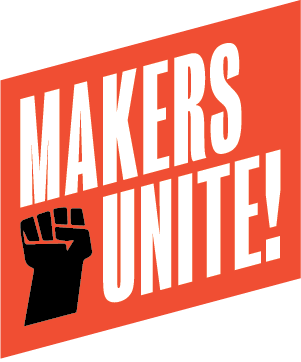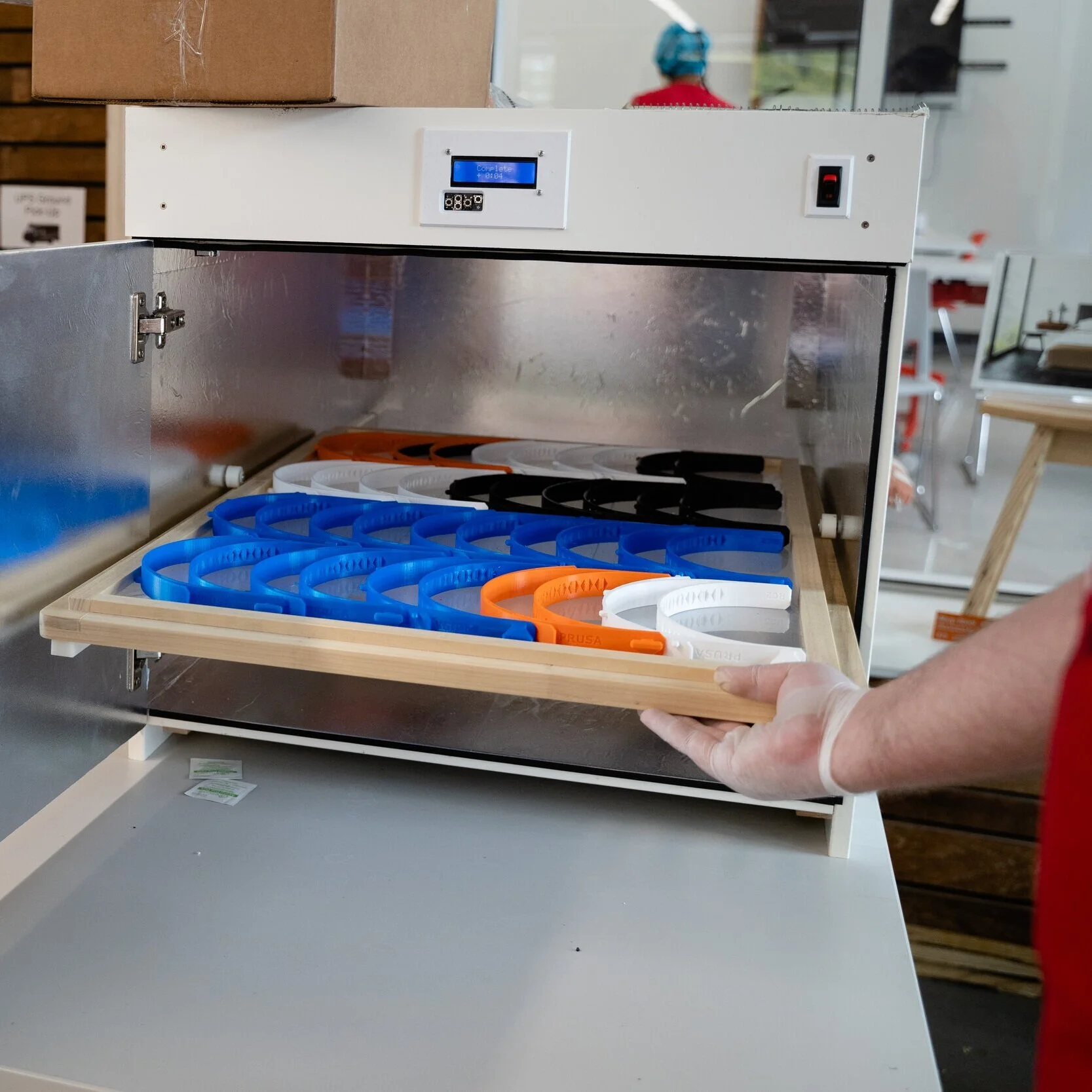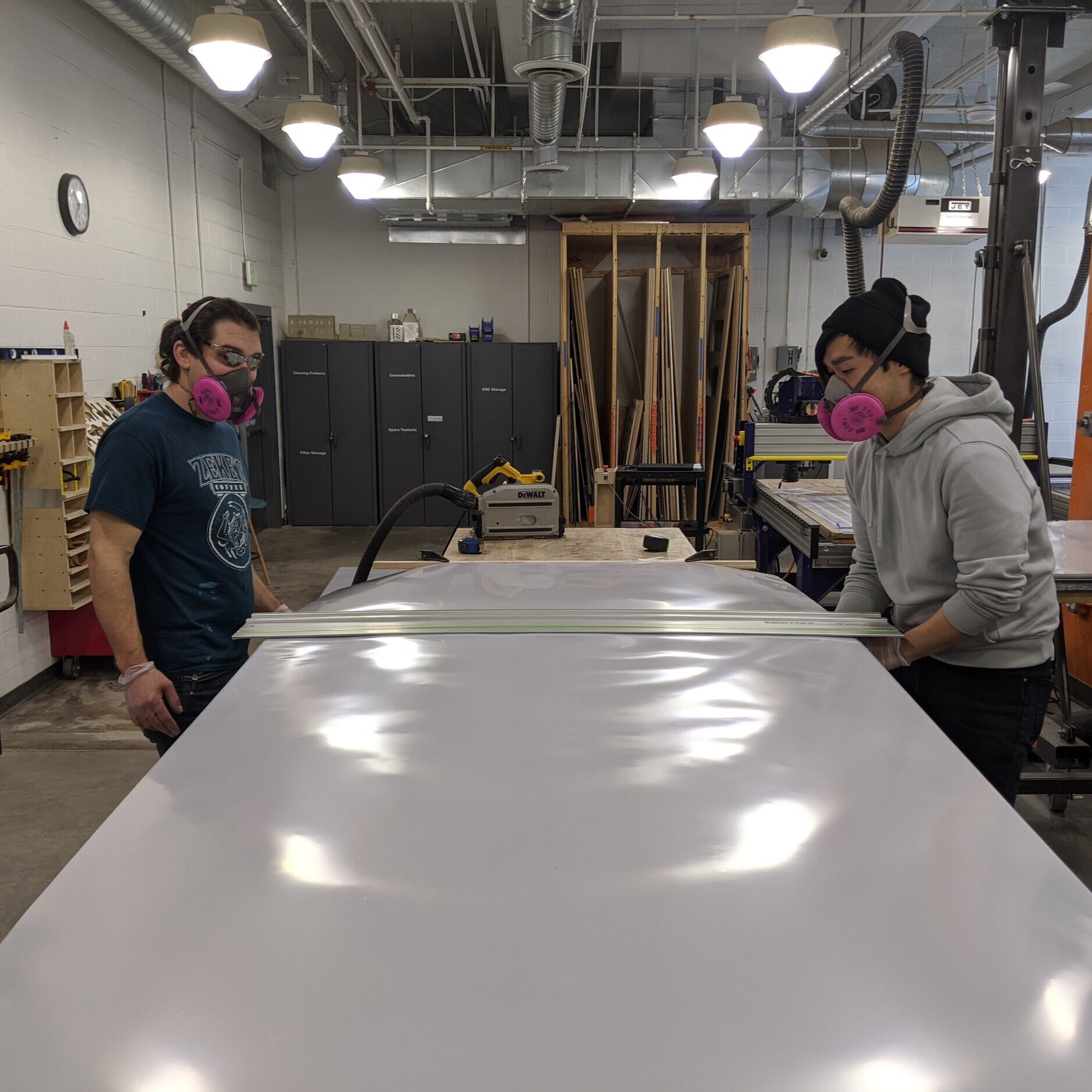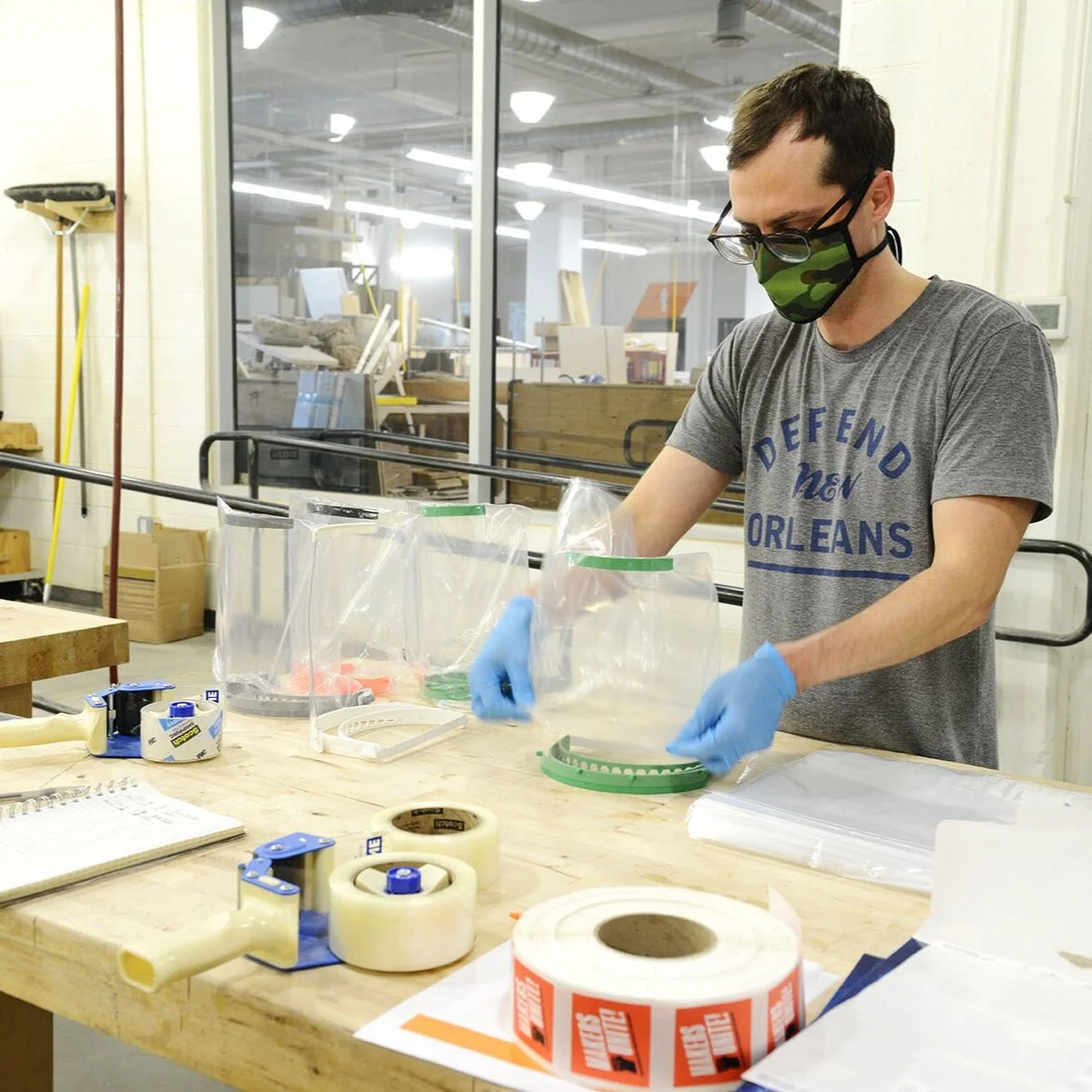Process
So, how does this whole system work? Here’s a quick photo narrative of our production process. You can also check out this short video on YouTube that we put together.
You print parts at home. Here we have some students from St. Louis School under the tutelage of Mrs. Whiteford and Mrs. Phelps running some headband parts at home.
Once you’ve collected a couple of parts (minimum of 3) drop them off in the contact-less box by our front door.
We collect your waiver, then disinfect the parts in a nifty UV oven developed by Ryan Hoover and the digital fabrication team at MICA.
Meanwhile, we have to cut down sheets of PETG so they will fit in our laser cutters . . .
. . . we have four large-format lasers and can cut roughly 1,000 visors per day . . .
. . . and once they come off the laser bed, we peel the second side of the plastic off before assembly.
While we have parts disinfecting, and visors getting cut, a third station is cutting lengths of elastic with a hot cutter . . .
. . . then the lengths of elastic get a snip in each end to go over the pegs on the headband.
All of the parts finally come together at an assembly station . Each shield is composed of four parts: the headband, a bottom reinforcement, and elastic. Plastic parts are inspected for any defects, sanded or scraped smooth, and then combined with the other parts and stacked in batches of ten. Photo by Andy Cook/Made in Baltimore.
Shields are given a final QC check and cleaned with compressed air. Photo by Andy Cook/Made in Baltimore.
Each shield is individually packaged in a cellophane bag to prevent scratching. Photo by Andy Cook/Made in Baltimore.
Shields are boxed, labeled with time and date of manufacture (in case end users want to quarantine the shields before use), and sealed with a spec sheet for delivery. Photo by Andy Cook/Made in Baltimore.












